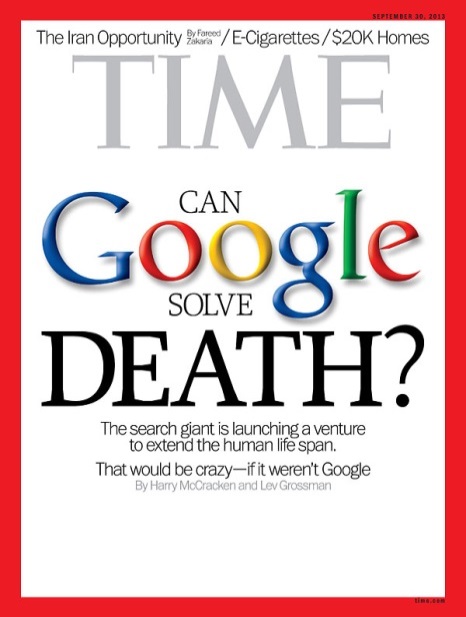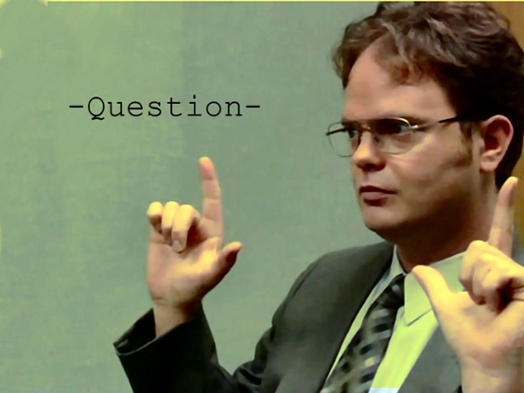Loss Aversion, The Status Quo & The Laziness Gene
What do you think about these two characters?
If you are like most people, you instantaneously and instinctively knew which Grommit to avoid… apparently before you even knew what you knew. You even experienced subtle, measureable neurological impulses supporting your instinctive reactions. (Attention grumpy faced bosses out there who wonder why people avoid you! Hint: smile more… and mean it!).
I mentioned in a recent blog the book Thinking Fast and Slow. Written by psychologist Daniel Kahneman, a Nobel prize winner in economics, it provides a very readable account about “how we think”.
Our ability to detect and avoid nasty Grommits and other threats — instantaneously and subconsciously – is one simple example of the many patterns of thinking we all exhibit, every day.
This is one of the many delightful examples and stories Kahneman shares about how our minds work. Trouble is, our brains can just as often lead us to errors in thought and judgment. Kahneman tells us that people holding a pencil in their mouth while engaged in decision making (which forces a smile) decided measureably differently than those holding it in suck mode (which forces a frown). He tells us how well educated jurists, believe wrongly they are engaged in objective decision making, when in fact they are influenced by the recency of their food intake. (This likely explains the “tribal wisdom ” of start-ups to meet with prospective VCs early in the day; not late.)
In today’s blog I want to talk a bit about why people interested in organizational design, talent management, employee engagement, performance reviews, and the many other important aspects of workplace relationships and interactions might want to read this book if they have not already been exposed to behavioral sciences and their application in the human resources domain.
Kahneman observes that our brains are “designed to give priority to bad news”. He describes this deeply embedded instinctive equipment – our tendency towards loss aversion – as “one of the most significant contributions of psychology to behavioral economics”.
Over a few decades of research Kahneman and others have used insights like this one to poke some rather large holes in the assumptions of rational behavior that drives orthodox economics thinking on topics like utilitarianism, price theory and the efficiency of markets.
But maybe this all sounds too abstract. Why should we care?
I think the answer is that organizations, and the managers, team leaders, and human resources professionals involved in the marketplaces where we buy and sell our labour, are all susceptible to many of the same failures of thought that he explores in some detail. It’s worth at least being aware of them.
Commenting on the overpowering force exerted on all of us by the “status quo”, Kahneman notes that loss aversion is a “powerful conservative force that favors minimal changes from the status quo in the lives of both institutions and individuals. This conservatism helps keep us stable in our neighborhood, our marriage, and our jobs; it is the gravitational force that holds our life together”.
He also observes that a “general law of least effort” (physical or mental) encourages us to gravitate towards least demanding courses of action towards goal achievement, because “laziness is built deep into our nature”.
Those engaged in “business process re-engineering”, cleaning up after M&A transactions fail to produce promised “synergies” as advertised, or struggling with “analysis paralysis”as they try to avoid the “innovator’s dilemma” have experienced these tendencies first hand.
The traditional “organizational chart”, the organizational design ideas associated with it, and the people management skillsets and assumptions associated with it, are all very much extensions of this mode of thinking and a metaphor for this way of being — a static, paper based representation of the slow-to-change bureaucratic and hierarchical model of our interactions in the workplace. Status quo in spades.
At Organimi we hope to work with others to change that by reimagining and reinventing org charts.
Loss Aversion In A Changing Organizational Landscape
The economic picture in North America appears to be on the mend, despite political gridlock, debt concerns and a continuing intensity of competition in a converging global economy. Job growth is up, stock markets are up, car sales are up, housing markets have stabilized.
So if things are getting better, where is all the anxiety coming from? I was struck by a recent report that anti-depressant prescriptions exceed those for birth control pills on North American university campuses. That seems just not right. And how about this “lost generation” of unemployed and underemployed young people waiting for their elders to “retire already”, while knowing that older workers must remain in the workforce longer for the same reasons. Inadequate savings; large debts.
Recent reports indicate that US businesses have amassed over $1.5 trillion (and counting) in cash on their balance sheets. This pattern is not unique to the US. It has been repeated elsewhere globally as Canada’s then (the UK’s now) Central Bank chief Mark Carney’s comment in 2012 about the “dead money” littering corporate balance sheets reminded us. This may be a great example of organizational “loss aversion” happening on a grand scale.

At the same time, US worker-consumers, like worker-consumers elsewhere, are experiencing declining real wages, with a widening wealth gap between the few and the many, partially offset (in the near term at least) by low borrowing costs and low inflation. Student debts, housing debts, worries about crime despite declining crime statistics, political deadlock — all of these facts loom large in daily life for many people.
If we are motivated more by mitigating losses than securing gains, how do we cope with the substantial changes we see around us in our workplaces every day? What should we do when change is forced on us? How should our organizations and our relationships with them, and with each other, change?
Recent articles hignlighting the alientation and lack of engagement of even the technically advanced “knowledge workers” are only the latest of a long string of stories about how organizations are failing their members.
Kahnehan has some interesting observations about how we gather, process and think about the litany of information I just referred to above. How we ignore it; why we sometimes exaggerate it.
At Organimi we have noted these changes under way in the business landscape – who we work with, how we work, and where we work. Our working relationships are becoming multi-faceted, with full time, part time, contract, consulting and other staffing models. The tools many of us use are increasingly digital, knowledge based and mobile.
Our workplaces are becoming more fluid – office boundaries and borders are disappearing. Our work activities are becoming increasingly commoditized; many of us feel compelled to work diligently to define, develop and promote our own “personal brands” within the context of the organization, and outside of it, as we address these challenges.
In a vast ocean of information and interconnectedness, many individuals in their workplaces feel disconnected and isolated.
At Organimi we believe there are great opportunities today for managers, team leaders and HR professionals do so some serious thinking about how such things as “employee engagement” are measured, how we even think about such topics, and where effort can and should be expended to address the underlying issues and behaviors to make workplaces more interesting and engaging places for people.
At Organimi we want to help people organize the information about the organization and relationships around them, by creating an environment where they can connect, communicate and collaborate with each other in more meaningful ways. We want to replace static dead end org charts, with useful gateways for the conversations and connections that can bring people together, regardless of how and when and where they work.
Where and how can we help make this connection?
Looking For Reference Points; Follow The Leaders
We seem to follow business leaders these days the way we follow movie stars: a celebrity culture permeates the business landscape.
You probably noticed this recent cover story at your supermarket or local news stand or, if you’re old enough and still a subscriber, in your mailbox.

The US tech sector is incredibly wealthy – that $1.5 trillion of non-financial corporate cash we referred to above? About 30% of it is apparently held by tech issuers, 10% by Apple alone.
These days — in the tech space at least – it seems like Apple, Google and Tesla are the “rock stars” …..while organizations like Microsoft, Dell, HP, RIM and others fall by the wayside.
Tesla is just plain sexy; reimagining the world of cars and reinventing the entire value chain that goes along with them. My brother just took a job there – now there is a “friends and family” car program I can’t wait to tap into!
Google seems far more profound. It is to the technology space today what Microsoft was at the height of its market dominance. Googlians are the techno-ninjas of the modern age, applying engineering power to solve the world’s biggest challenges. Simultaneously taking on Telsa in car automation, Apple in mobile, Microsoft in browser and applications platforms, and many others, Google is ahead on so many fronts. So perhaps it was no suprise when Google recently announced its next “moonshot” mission: helping solve the challenges of disease and death.
We have all become accustomed to Google’s ambitious goal-setting – everything from reinventing computing platforms (Google Glasses ), to automating cars , to creating time machines to track the evolution of our earth. Even Google’s data centers that power our Internet interactions – scanning 20 billion pages a day – are beautiful. More than virtually all others today, the organization known as Google as melded people, technology and design into a vast, compelling organizational juggernaut. Google is so great as an employer, the story goes, that you don’t want to hire their employees because they are bound to be disappointed.
At Organimi we believe that executives, managers and human resources professionals in particular share unique responsibilities to help the people working in their organizations transition through this dynamic and rapidly changing business landscape. Where are the reference models for this work?
Following the leader can be quite insightful.
Measuring What Matters: The Oxygen Project
As in so many other areas of its business, Google has been an innovator in applying data driven discipline to evaluate and assess how it can continuously improve its managerial bench strength. So it is likely interesting to note, from both an employee relations and from a behavioral analysis point of view, some of the work Google is doing to help address its talent management needs and develop the capabilities of its people.
Google is doing this by “measuring what matters” for example to create “better bosses”. Over the past few years Google has received some press around its “Project Oxygen”. Perhaps the name is a throwback to an earlier MIT project focused on making computing human (rather than machine) centric; or maybe the name reflects the simpler reality that people need to breathe, and managers need to create the conditions necessary for this to happen. Regardless, there are a number of terrific articles describing Google’s Project Oxygen research into what makes good managers, and what can make them better. If you are not familiar, you may want to check them out.
The New York Times reported that at first blush Google’s list of best practises reads “like a whiteboard gag from an episode of The Office” but it was proven to be successful in helping debunk some of the myths of a very engineering centric organization.

As it turned out “technical prowess” ranked last of the traits staffers sought in managers (contrary to prior “tribal wisdom” on the topic of managerial competency). Instead Google’s people operations (ie HR) team found that “what employees valued most were even-keeled bosses who made time for one-on-one meetings, who helped people puzzle through problems by asking questions, not dictating answers, and who took an interest in employees’ lives and careers.”
The nugget there is “asking questions, not dictating answers” – a deeply ingrained process at Google. You can also find and read about Google’s Top 10 people management practises in a great article by Dr. John Sullivan. They are a useful guide.
Another equally revealing comment about Google’s ground breaking research is the shift from the “harder” data of the engineering world, to the softer data derived from the study and analysis of human interactions, and incorporating the many foibles of our day to day interactions.
This incorporation of analysis techniques and tools from the social sciences domains of psychology and behavioral science – disciplines that are usually considered anathema to the engineering crowd – has also proven to be a welcome step forward. In performance reviews, for example, Google has gone so far as to create a guidebook of “cognitive biases” for employees to keep handy during personnel assessment discussions.
For example, somebody may have just had a bad experience with the person being reviewed, and that one experience inevitably trumps recollections of all the good work that person has done in recent months. There’s also the “halo/horns” effect, in which a single personality trait skews someone’s perception of a colleague’s performance.” These comments reflect deeper understanding of the the way we think that could have come straight out of Kahneman’s work on the biases that cloud our thinking and influence our decision making.
Wrapping Up
Workplaces are dynamic and changing.
There are many complex things we as individuals and organizations can’t change (unless we are at Google, anyway).
But there are some simple things within our grasp that can help organizations better understand and manage people, and create effective engagement across their teams.
It is a process of combining more rigorous data driven analysis with a deeper insight into the potential pitfalls and landmines of our own biases in the decision making systems, processes and tools we use.
With this in place, managers, team leaders and HR professionals can have a clearer understanding how best to engage employees in a constructive process of learning about themselves and each other, while coping with change in dynamic work environments. The result? Creating and sustaining meaningful, purposeful and enjoyable working habits and relationships.
So reading Kahneman’s book is a starting point, and a good read to boot, as far as the work of social scientists go.
But be foreworned! Apparently, we’re all loss averse, wedded to the status quo, and lazy.
So once you are done the book, you’ll have to think about where you might go from there.
A simple starting point, guaranteed to start connecting people, is to check out Organimi.
If you want to help your team create a context for that discussion, toss out your old org charts, and give Organimi a go.
Enjoy the read.
The Organimi Team


